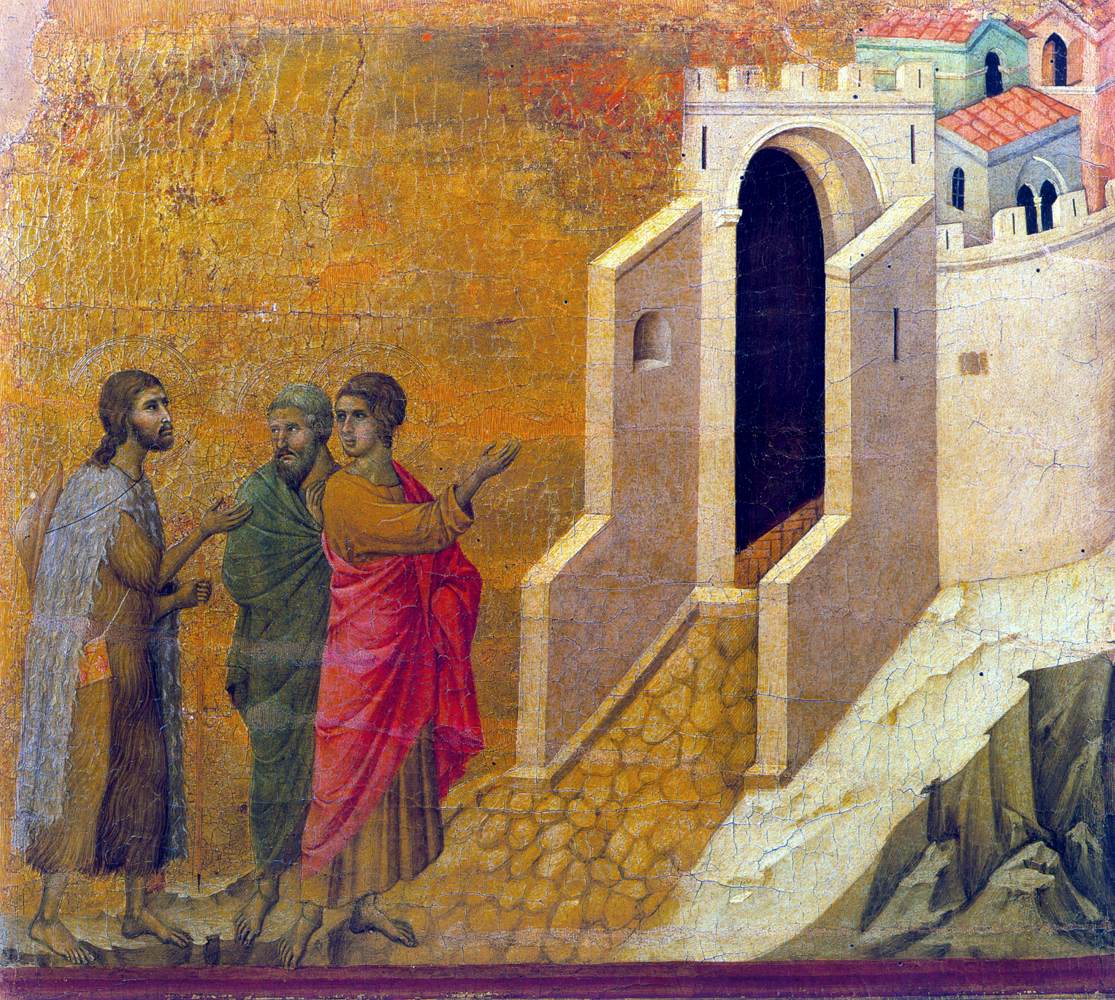Description
The painting Road to Emmaus (scene 26) by Duccio Di Buoninsegna is a masterpiece of 14th century Italian art. This oil painting on panel measures 51 x 57 cm and is in the National Gallery of Art in Washington.
Duccio's artistic style is characteristic of Italian Gothic, with great attention to detail and exquisite use of color and light. The composition of the painting is very interesting, as it shows the two disciples walking down a path surrounded by trees and mountains. In the center of the painting, Jesus is walking with them, but his face is hidden by a hood.
The color used by Duccio is very vibrant and luminous, which creates a feeling of joy and hope in the scene. Gold and yellow tones dominate the painting, suggesting the divine presence of Jesus.
The story behind the painting is very interesting. The scene represents the moment when Jesus appears to two of his disciples on the road to Emmaus, after his resurrection. The disciples do not recognize Jesus at first, but after sharing a meal with him, they finally recognize him and realize that they have been walking with the Savior all along.
A little-known aspect of this painting is that it is part of a larger polyptych, which includes other scenes from the life of Christ. The painting was created for the Siena Cathedral in Italy, and was one of the first works of art of the time to show biblical characters with greater expressiveness and humanity.
In short, the painting Road to Emmaus (scene 26) by Duccio Di Buoninsegna is a masterpiece of 14th-century Italian art, notable for its artistic style, composition, color, and the story behind it. It is a stunning piece that continues to captivate art lovers around the world.

